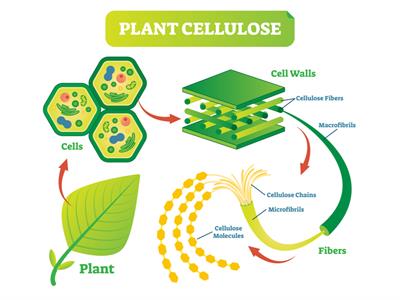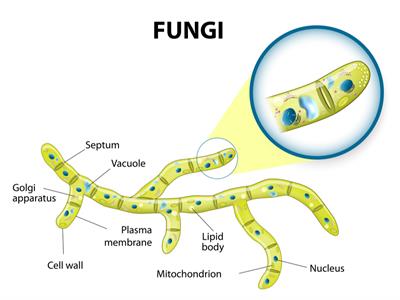
PUMPA - SMART LEARNING
எங்கள் ஆசிரியர்களுடன் 1-ஆன்-1 ஆலோசனை நேரத்தைப் பெறுங்கள். டாப்பர் ஆவதற்கு நாங்கள் பயிற்சி அளிப்போம்
Book Free DemoIn addition to the Plasma membrane, plant cell has another rigid outer covering called Cell wall.
Cell wall is the outermost, rigid, non-living part of the cell, present outside to the plasma membrane of the cell.
- It was first seen in cork cells by Robert Hooke, and the thickness of cell wall ranges from \(0.1\) to \(10\mu\)\(m\).
- A cell wall can have three parts - middle lamella, primary wall and secondary wall.
Cell wall is present in plant cell, fungi, bacteria, etc. and absent in animal cell.
1. In a plant cell, the cell wall is mainly made up of cellulose. Cellulose is a complex substance which gives the structural strength to the plants. It is permeable to water, solutes and gases.

Plant cellulose
2. In bacteria, it is mainly made up of peptidoglycan.
3. In fungi, it is mainly made up of chitin.

Functions of cell wall:
1. It protects protoplasm from mechanical injury and pathogens.
2. Cell wall prevents cell damage from excessive endosmosis.
3. Cell wall gives a structural framework to the cell
4. Cell wall gives mechanical strength and rigidity to the cell.
5.Growth of cell wall helps in cell expansion.
5. In a highly dilute environment (hypotonic) cell take up water by osmosis. In doing so, cells swell up and create pressure against the cell wall. Cell wall prevents the cell from bursting out in such condition.
6. In reverse to the above point, if a plant cell loses water through osmosis in a highly concentrated external environment (hypertonic), causes shrinkage of the cell. This event is called as plasmolysis.
7. Cell wall has narrow pits. Through them, fine strands of cytoplasm (cytoplasmic bridges) are there and are called as plasmodesmata. Plant cells interconnect with each other through this cytoplasmic bridges.
Comparison between Cell wall and plasma membrane:
Cell wall | Plasma membrane |
It is present only in plant cells. | It is present in both animal and plant cells. |
It is the peripheral layer of the plant cell. | It lies on the outside of the animal cell and inner to the cell wall in plant cells. |
It is thick and rigid. | It is thin, delicate and flexible. |
It is permeable to water, solute and gases. | It is a selectively permeable membrane. |
Its mainly made up of cellulose, hemicellulose and pectin. | Plasma membrane formed as a bilayer of lipid and protein. |
It gives protection and strength to the cell. | It acts as a mechanical barrier and regulates the movement of molecules in and out of cells. |